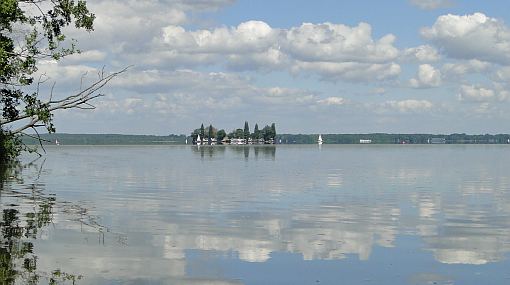Basin countries Germany Max. width 4.5 km (2.8 mi) Area 29.12 km² Width 4.5 km Mean depth 1.35 m | Max. length 8 km (5.0 mi) Surface area 29.12 km (11.24 sq mi) Surface elevation 38 m Length 8 km Outflow location Weser | |
 | ||
Primary inflows Primary outflows Meerbach (towards Weser River) Similar Weser, Maschsee, Dümmer, Hanover Zoo, Eilenriede | ||
The Steinhuder Meer or Lake Steinhude is a lake in Lower Saxony, Germany located 30 kilometres (19 mi) northwest of Hanover. It is named after the nearby village of Steinhude. It has an area of about 30 square kilometres (12 sq mi), making it the largest lake of northwestern Germany, but it is very shallow, with an average depth of only 1.35 metres (4.4 ft) and a maximum depth of less than 3 metres (9.8 ft). It lies within a region known as the Hanoverian Moor Geest.
Contents
Map of Steinhuder Meer, 31515 Wunstorf, Germany
GeologyEdit
It is part of the glacial landscape formed after the recession of the glaciers of the latest Ice Age, the Weichselian glaciation. There are two theories regarding how the lake of Steinhude was formed. One of them says that glaciers gouged out the hole and meltwater filled it. The other theory states that an ice storm formed the hole and as the groundwater rose, the lake was created. In its middle there is a small artificial island carrying an 18th-century fortification, the Wilhelmstein. Today the lake is the heart of a nature reserve, the Steinhuder Meer Nature Park, and is also used as a recreational area.
IslandsEdit
The lake has two islands, both of them artificial:
TourismEdit
The lake is a popular destination for locals and for vacationists. Up to three ships offer cruises; they are supplemented by smaller boats running on schedule across the lake. A bike path (ca. 22 mi/35 km) encircles the lake, crossing various landscapes.
